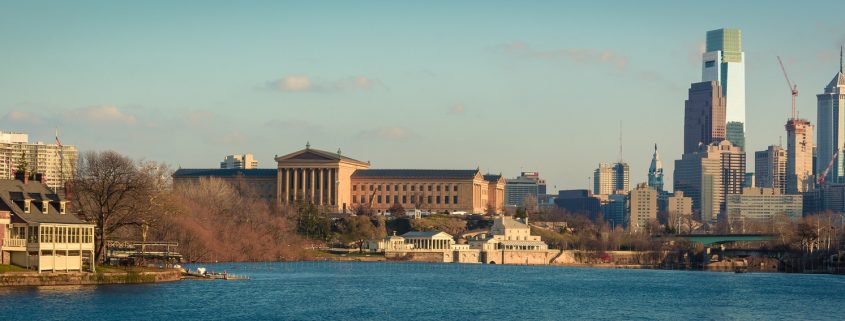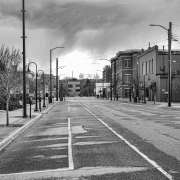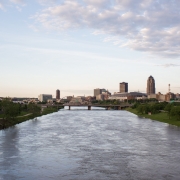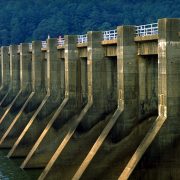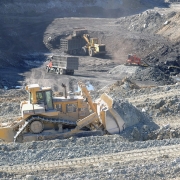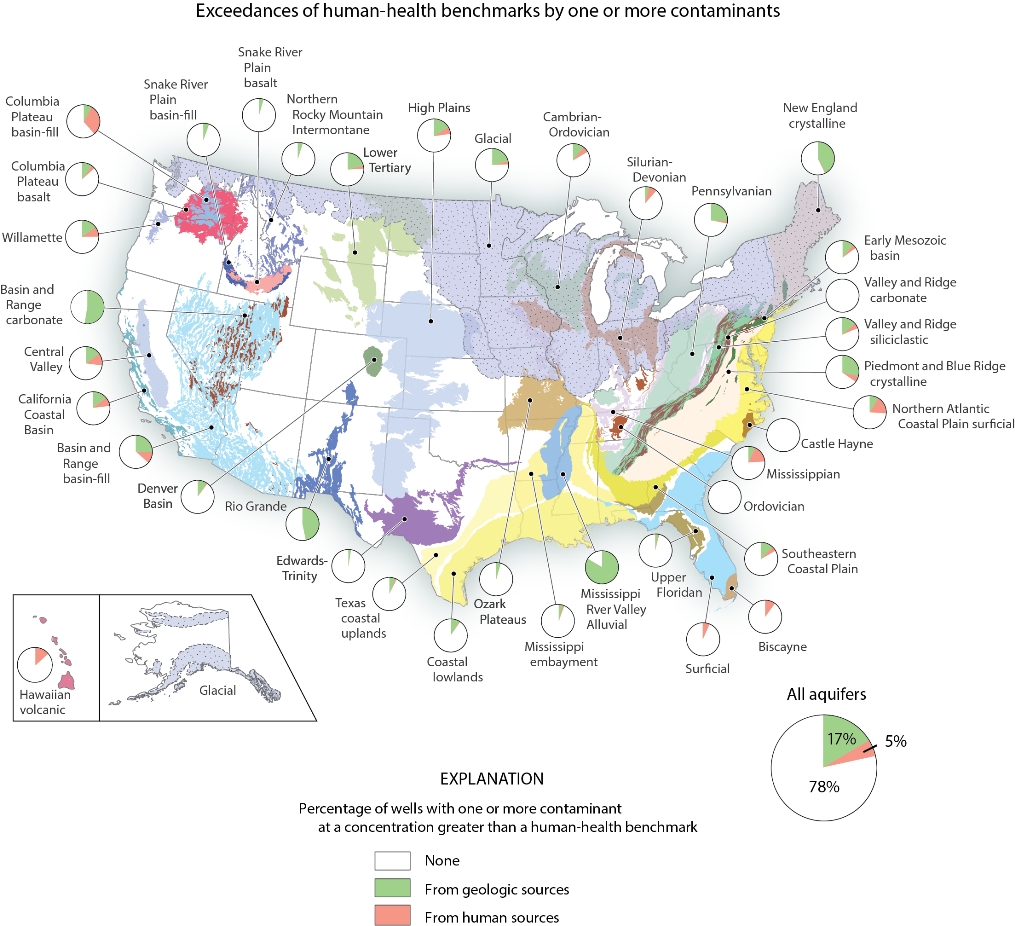Philadelphia Water Rate Links Payments to Household Income
City utility prepares nation’s first water rate based on annual earnings.

The Schuylkill River flows through Philadelphia. Photo courtesy of Flickr/Creative Commons user pmillera4
By Brett Walton, Circle of Blue
Running for a Philadelphia City Council seat in November 2007, Maria Quinones-Sanchez won election as a champion of affordable housing.
In office, Quinones-Sanchez and her staff soon discovered that housing was neither the beginning nor the end of the cycle of budget pressures that weigh on poor families. Housing, it turned out, was linked to broader costs of living, including water. If residents could not pay their water bills, their chances at keeping their home were much lower. She witnessed some of her neighbors make desperate choices.
“In my neighborhood of Hunting Park, I saw that accumulated real estate and water debts in the tens of thousands of dollars per household, with rapidly accruing interest and penalties, were leading folks to walk away from their homes,” the three-term Democratic councilwoman told Circle of Blue. “It wasn’t possible for someone to stay in their home valued at $30,000 to $40,000 with that much debt attached to the property, and the city’s payment plan options were not helping.”
Finding after taking office that one-fifth of the city’s past-due residential water accounts were located in her district, Quinones-Sanchez eventually introduced legislation to overhaul the Philadelphia Water Department’s aid program for the poor. In December 2015, then-Mayor Michael Nutter signed the bill, which established a monthly payment plan for households near or below the poverty line that is linked to how much they earn. The water department is finalizing the regulations for the program, which will go into effect on July 1. It will be the country’s first water rate based on income.
The financial struggle of the poorest Americans is a national concern as wages for those at the bottom fail to keep pace with the rising costs of living: food, housing, medicine, doctor’s visits, and even household water service. Latching on to the conviction that water is a human right, as the United Nations General Assembly declared in 2010, campaigners in the United States have coalesced into a national movement for affordable water. In Philadelphia they have a perfect example of a malfunctioning system.
The poverty rate in Philadelphia is 26.4 percent, well above the national average of 13.5 percent and the Pennsylvania average of 13.2 percent. The cost of monthly water service, adjusted for inflation, has climbed 30 percent since 2010, according to Circle of Blue calculations. Nonpayment of bills is endemic. The water department is owed $170 million in commercial and residential back payments that are at least one year past due. As a result, a startling number of residents, disproportionately in African American-majority districts, have had their water turned off for inability to pay. According to Philadelphia Water Department figures, some 86,000 household accounts — one in five in the city — have had water shut off at least once since April 2012.
“There is a need out there,” Joanne Dahme, Philadelphia Water Department spokeswoman, told Circle of Blue, referring to the income-based water rate.
All in all, it is a system of debt and domestic disruption that is ripe for change.
“It is absolutely important that we provide affordable water bills and this program is designed to do that,” said Robert Ballenger, a lawyer with Community Legal Services, a Philadelphia organization that helps families enroll in city aid programs. “It seems to us it is an opportunity to accomplish a number of goals,” he said — increase utility collections, lower bills, keep families in homes, and uphold public health and safety.
A staple for decades in electric and gas company assistance programs, income-based rates, with Philadelphia at the lead, could soon be a water utility feature as well.
Water Follows Energy’s Lead
Aid programs for energy bills have long been more generous and inclusive than for water. The federal government started its energy bill assistance program in 1981 after the Iranian revolution and Iraq’s invasion of Iran caused oil and gas prices to soar. The program handed out $3.4 billion in fiscal year 2016 to roughly 6.8 million U.S. households to help keep air conditioners and heaters running. Though Democrats in Congress have introduced legislation to establish a similar federal program for water, none currently exists.
Income-based rates, mandated by state lawmakers, soon followed for the energy industry, said Roger Colton, a consultant who has worked on water and energy affordability issues for more than three decades and testified in support of Philadelphia’s income-based rate during hearings in 2016. The Ohio Legislature passed a law in 1989 that required electric and natural gas companies regulated by the state Public Utility Commission to implement income-based rates.
When it deregulated the electric market in the 1990s, Pennsylvania mandated a similar rate, said Tanya McCloskey of the Pennsylvania Office of Consumer Advocate. “If we’re moving to a competitive market, we wanted to make sure that the low-income customers would not be harmed,” McCloskey explained. “The risk was that rates would increase but not be regulated.”
More than 285,000 electric power customers participated in the program in 2015, according to the Pennsylvania Public Utility Commission.
“In my view, it’s been a very successful program,” McCloskey told Circle of Blue. “That’s why we support the continuation of it.”
Water assistance lags because, until recently, bills were generally low enough that affordability was not a primary concern. Also, some state laws prohibit the subsidization of one class of utility customer by another. In those states that do allow it or in those where ratepayers offer voluntary contributions, most water bill assistance programs bring down bills through a discount rather than work out what is affordable for individual households based on earnings.
“The water industry will find that it does no good to bill customers who can’t afford to pay,” Colton said. Collection rates are above 90 percent for poor households served by regulated Pennsylvania gas and electric utilities. That means a household on an assistance plan pays, on average, more than nine out of 10 dollars on its monthly bill.
Philadelphia’s Rate Experiment
The Philadelphia Water Department is still finalizing the tiered assistance program (TAP), as the income-based rate will be known. But the basic principles are confirmed.
The income-based rates follow federal poverty guidelines, which are based on pre-tax income and vary depending on the number of people living together. TAP sets monthly water bills as a percent of income. A household making zero to 50 percent of the poverty line will pay two percent of monthly income for the water bill, which includes sewer and stormwater charges. A household between 51 percent and 100 percent of the poverty line will pay 2.5 percent of monthly income; a household between 101 percent and 150 percent will pay three percent. The minimum bill will be $12 per month.
These percentages are lower than the U.S. Environmental Protection Agency’s affordability threshold of 4.5 percent of income for a combined water and sewer bill.
TAP households will not be charged based on consumption, but the water department will monitor for unusually high use. Those households will get free low-flow fixtures, leak detection tests, and information about how to conserve water.
In the end, TAP households will pay less than they would under the typical water rates. How much less depends on family size and income. A three-person household that makes $20,000 per year falls in the 51 to 100 percent category and would pay $41.66 per month for water. A two-person household making $15,000 per year would pay $31.25 per month. (The federal government’s poverty threshold for a three-person household in 2017 is $20,420 and a two-person household is $16,240.) An average household water, sewer, and stormwater bill in Philadelphia is $70.87, according to the water department.
The department estimates that 56,156 customers would be eligible for TAP.
TAP is designed to address a number of deficiencies with the existing aid program, called WRAP, which will be phased out. Customers have to be behind on bills before they can enroll in WRAP. They also have to be the homeowner, which can be complicated when deeds are not properly transferred. By allowing poor households instant access to TAP, even if they are not the homeowner, the utility hopes they can nip bill-paying problems before they start. “It’s proactive,” Dahme, the water department spokeswoman, told Circle of Blue.
Arrears, or bills that are past due, lead to a spiral of debt, Colton says. Households, for many reasons, fall behind in payments: a temporary job ends or an unexpected expense arises. For people living at the margin any bad break can send them over the edge. Once behind, it’s hard to stay current because of how debt repayments are structured. “Customers cannot pay their current bills without first having paid all of their arrears. Customers cannot retire their new arrears without having first retired their older arrears,” Colton wrote in an analysis of an arrears forgiveness program for Philadelphia.
As of May 10, some 5,445 customers were enrolled in WRAP and the average arrears were $4,841, according to Philadelphia Water Department figures. Shutoffs can occur when a customer account is $75 past due and the household has received two shutoff notices. Some 40,000 accounts are currently eligible for shutoff, Dahme said.
If the water department’s existing assistance plans were helping, average past-due balances would be expected to decrease. Instead, they have steadily climbed — up 43 percent for WRAP enrollees compared to 2009.
Customers enrolled in TAP will see their past due balances suspended and they will not have to make arrears payments while they are in the program. The balances, however, will not yet be wiped clean. The City Council legislation that established TAP allows for debt forgiveness, but those provisions are still being negotiated between the Philadelphia Water Department and Councilwoman Quinones-Sanchez’s office, according to Eric Bodzin, legislative aide to Quinones-Sanchez.
“We’re confident that by the time TAP is unveiled there will be an agreed upon regulation,” Bodzin told Circle of Blue. “But we’re not there yet.”
Still Concerns About Access
An aid program is only beneficial if it reaches the people who need it. Customers who want to enroll in TAP must apply for it. There will be an online application as well as paper copies for those without internet access, Dahme said. The department will advertise on radio and public transit, print posters, and hold meetings with civic groups.
Community organizations hope that the bureaucratic tangle that plagued WRAP does not manifest in the new program. “There’s optimism across the city that TAP will be much easier,” Ballenger, the lawyer, told Circle of Blue.
But others, for now, are withholding judgment. Bernard Reed, president of the Workers Benefit Council, a voice for the city’s working poor, told Circle of Blue that the water department in the past “put you through hoops and hurdles” to sign up for an assistance plan — charges to reconnect to the water system after water had been shut off, policies that only the homeowner can apply for bill assistance, and documentation requirements that are difficult to produce for people living and working informally: a consistent pay stub, for example, or an official lease.
Reed referred in conversation to the United Nations’ sustainable development goals, which the international body approved in 2015. Goal 6 aims to achieve “universal and equitable access to safe and affordable drinking water for all” by 2030.
Even in the United States today, Reed reminded a listener, access is not universal. Just look at Philadelphia, Detroit, and Flint. Water shutoffs, past-due bills, they are all “part of a bigger piece of the whole,” Reed said. “And that’s poverty.”
The TAP program is necessary for the poor in Philadelphia, Reed concluded. But in the wider view, it is not nearly sufficient.
Brett writes about agriculture, energy, infrastructure, and the politics and economics of water in the United States. He also writes the Federal Water Tap, Circle of Blue’s weekly digest of U.S. government water news. He is the winner of two Society of Environmental Journalists reporting awards, one of the top honors in American environmental journalism: first place for explanatory reporting for a series on septic system pollution in the United States(2016) and third place for beat reporting in a small market (2014). He received the Sierra Club’s Distinguished Service Award in 2018. Brett lives in Seattle, where he hikes the mountains and bakes pies. Contact Brett Walton

